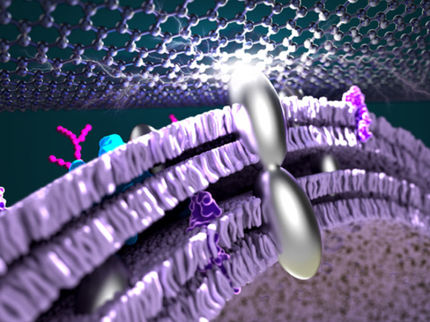Graphene oxide's secret properties revealed at atomic level
A research team found that graphene oxide's inherent defects give rise to a surprising mechanical property
Since its discovery, graphene has captured the attention of scientists and engineers for its many extraordinary properties. But graphene oxide largely has been viewed as graphene's inferior cousin.
"Graphene is so perfect," said Northwestern Engineering's Jiaxing Huang. "And graphene oxide is more defective, so it's like the weaker, less exciting version of graphene."
Now a Northwestern University team has found that graphene oxide's seemingly undesirable defects surprisingly give rise to exciting mechanical properties. Led by Horacio Espinosa, the James N. and Nancy J. Farley Professor in Manufacturing and Entrepreneurship at Northwestern's McCormick School of Engineering, the researchers used a experimentation and modeling approach to examine the mechanics of this previously ignored material at the atomic level. What they discovered could potentially unlock the secret to successfully scaling up graphene oxide, an area that has been limited because its building blocks have not been well understood.
"Our team discovered that graphene oxide exhibits remarkable plastic deformation before breaking," said Espinosa. "Graphene is very strong, but it can break suddenly. We found that graphene oxide, however, will deform first before eventually breaking."
Huang compares the difference in the materials' properties to common objects. "Ceramic is strong," he says, "but if you break it, it will shatter. Now if a plastic cup is squeezed, it will bend before it snaps."
. In addition to Espinosa, Northwestern Engineering's Jiaxing Huang, associate professor of materials science and engineering, and SonBinh T. Nguyen, professor of chemistry in the Weinberg College of Arts and Sciences, are co-principal investigators on the project. Postdoctoral fellow Xiaoding Wei and graduate students Rafael A. Soler-Crespo and Lily Mao are co-first authors of the paper.
The team found that graphene oxide's plasticity is due to an unusual mechanochemical reaction. Graphene oxide comprises two carbon atoms and one oxygen atom, a formation known as an epoxide. When an epoxide's bonds are chemically broken, the carbon-oxygen bonds break, leaving the carbon-carbon bond intact. The research team, however, found that when a mechanical force was applied to graphene oxide, the carbon-carbon bond broke first, leaving the carbon-oxygen bonds in place.
"We uncovered this surprise on the atomic scale," Nguyen said. "This is completely different than what occurs in other materials and a very unusual property for the graphene oxide sheet."
Original publication
Most read news
Original publication
Xiaoding Wei, Lily Mao, Rafael A. Soler-Crespo, Jeffrey T. Paci, Jiaxing Huang, SonBinh T. Nguyen & Horacio D. Espinosa; "Plasticity and ductility in graphene oxide through a mechanochemically induced damage tolerance mechanism"; Nature Comm.; 2015
Organizations
Other news from the department science

Get the chemical industry in your inbox
From now on, don't miss a thing: Our newsletter for the chemical industry, analytics, lab technology and process engineering brings you up to date every Tuesday and Thursday. The latest industry news, product highlights and innovations - compact and easy to understand in your inbox. Researched by us so you don't have to.



























































